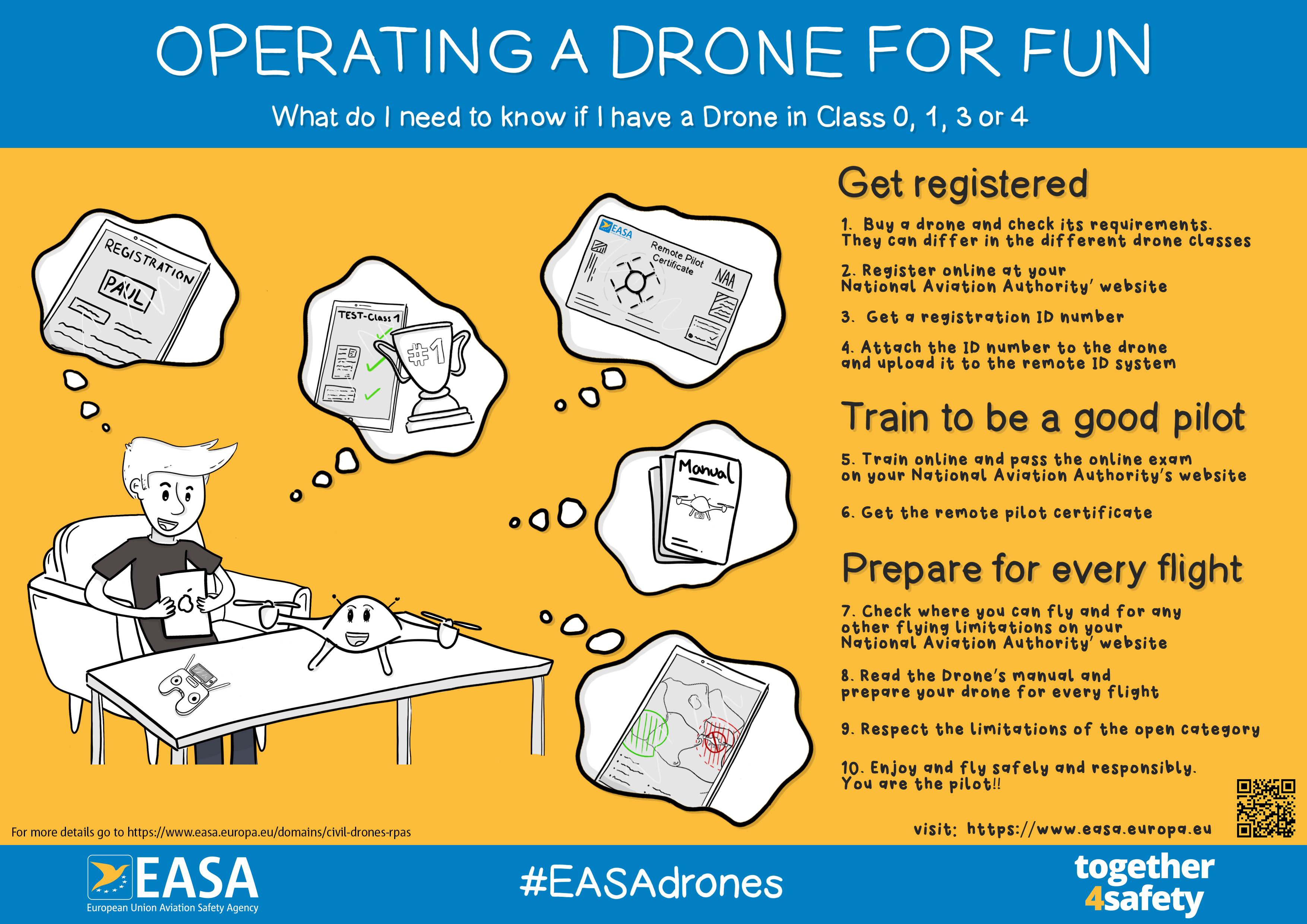Civil drones (Unmanned aircraft)
EU Regulations 2019/947 and 2019/945 set the framework for the safe operation of drones in European skies (EU and EASA Member States). They adopt a risk-based approach, and as such, do not distinguish between leisure or commercial activities. They take into account the weight and specifications of the drone and the operation it is intended to undertake.
EU Regulation 2019/947, which will be fully applicable from December 30, 2020, caters for most types of operation and their levels of risk. It defines three categories of operations: the ‘open’, ‘specific’ and ‘certified’ categories.
The ‘open’ category addresses operations in the lower risk bracket, where safety is ensured provided the drone operator complies with the relevant requirements for its intended operation. This category is subdivided into three further subcategories called A1, A2 and A3. Operational risks in the ‘open’ category are considered low, and therefore no authorisation is required before starting a flight.
The ‘specific’ category covers riskier operations, where safety is ensured by the drone operator obtaining an operational authorisation from the national competent authority before starting the operation. To obtain the authorisation, the drone operator is required to conduct a safety risk assessment, which will determine the requirements necessary for safe operation of the drone(s).
In the ‘certified’ category, the safety risk is so high that certification of the drone operator and the aircraft is required to ensure safety, as well as the licensing of the remote pilot(s).
The management of traffic for drones will be ensured through the U-space.
U-space is another arm of the drones’ regulatory framework. It creates and harmonises the necessary conditions for manned and unmanned aircraft to operate safely in the U-space airspace, so as to prevent collisions between aircraft and to mitigate the air and ground risks. The U-space regulatory framework, supported by clear and simple rules, should permit safe aircraft operations in all areas and for all types of unmanned operations. This is the airspace architecture and services that will ensure the safe flight of drones once in flight. The U-Space regulatory framework is currently under discussion, with publication planned for 2021.
How to be compliant as of December 31, 2020
Once the regulation becomes applicable on December 31, 2020, your first step as drone operator/ remote pilot will be to register in the country in which you live, or have your main place of business. Please see the list of drone website references by country 'Drones - National Aviation Authorities' for more details.
Do I need to register my drone?
What happens once I register?
Will my registration as operator be recognise throughout Europe?
Your second step is to ensure that you, as drone operator or remote pilot are aware of the rules and risk connected with the operation. The drone operator is the person who is registered and is responsible for the operation. The remote pilot is the person that actually controls the drone. A drone operator may also be a remote pilot or he/she may employ one or more remote pilots. The remote pilot must have the appropriate training for the operation to be conducted. Please see the FAQ for details.
Training requirement “open” category
Training requirement “specific” category
You will also need to ensure that you have acquired the required the right insurance for your drone. We recommend you to check the requirement for insurance with your NAA. Please refer to the FAQ for details.
Last, but not least, check with your NAA where you are authorised to fly and where you need to have a flight authorisation before entering the zone (geographical zone). Report back to your NAA any incident or accident you witness or are part of, when it caused an injury to a person or when it involved an aircraft with a pilot on board.




Ingen kommentarer:
Legg inn en kommentar
Merk: Bare medlemmer av denne bloggen kan legge inn en kommentar.